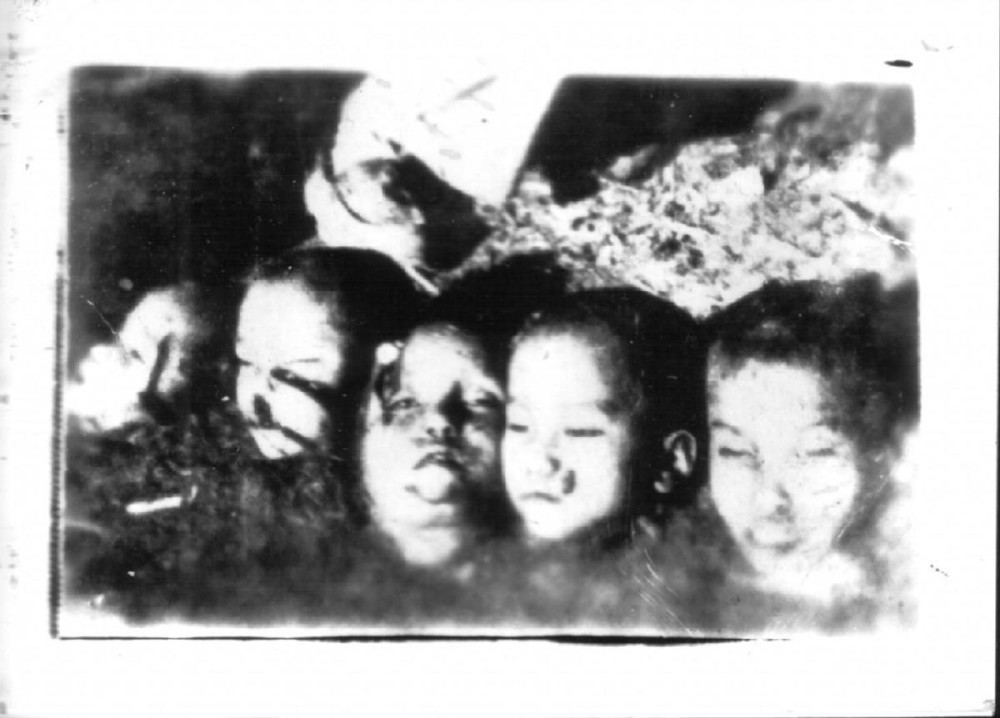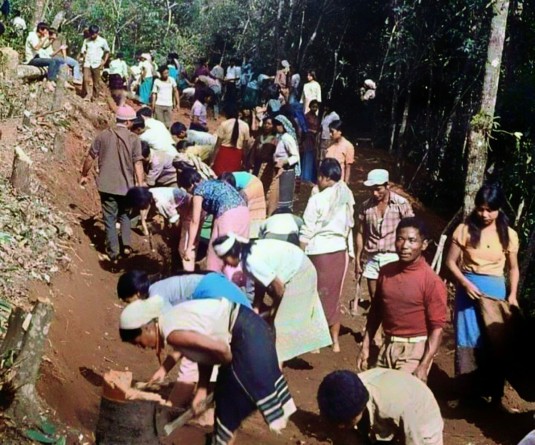This grainy photograph shows heads of children that a memoir of a WWII veteran says were lobbed off by Naga headhunters. A website www.classicalvalues.com shows this photograph as part of an article in which ancient Naga warriors are said to have hunted for heads of children as well. The photograph is scanned from the original and is understood to belong to the WWII veteran, father of the blog’s author. Both the picture and the article can be viewed on classicalvalues.com

Al Ngullie
Morung Express News
The Hornbill Festival, ongoing in Nagaland’s capital Kohima, is a joyful explosion of the romance and glory, life and culture of the ancient Naga warrior tribes. The history and lore of the Nagas tribes of India’s remote North East Region tell a heritage of valor and honor; a fierce, independent and narrative testimony of a martial people born to war and conquests – and born to hunt for heads of enemies.
The masculine glory surrounding the ancient Naga Headhunters’ lives naturally evince a vivid romance of bravery and strength. Consequently, to any person aware of the Naga legends, any possibility that ancient Naga warriors could have felled anyone inferior to them in size or strength seems cowardly at the very least. Yet, that improbability could well be a probability – a memoir of a World War II veteran narrating a gory tale of Naga warriors who lobbed off heads of babies and children, has surfaced.
Killing young persons especially males, belonging to enemy communities, is fairly a part of Naga stories, but targeting the heads of babies and small children may be quite a new twist to Naga history enthusiasts. (Legends say the practice of killing young males was to prevent them from exacting vengeance after they grow up).
According to the WWII veteran’s narrative, Naga warriors apparently did not spare even very small children – in fact, according to his understanding of the ancient Nagas’ practice, one head of small child equaled ten adults’ heads. Hence, the memoir says, a baby’s head equaled several adult heads, leading to more rapid promotion in the tribal hierarchy.
The narrative can be found on www.classicalvalues.com a blog site that delves on classicist culture, contemporary values and peoples, modern nitty-gritty as well. The author of the blog, simply appended as ‘Eric,’ reflects on culture and people “surrounded on all sides by people who want to civilize you, and convert you and your people to their way of life.” He queries – “What do you do..? Head for the hills?” Only one way, Eric explains – “you scare the holy crap out of them. I don’t mean to particularly offend anyone, but I think this gruesome photograph will demonstrate how it was that the Naga headhunters managed to remain unconquered for so long.” (See photograph).
The article explains – “The (photograph of severed heads of Naga children) is a scan of an actual photograph taken by my father during World War II. The Naga headhunters lived in the rugged terrain in the area of the China-Burma-India (CBI) campaign, where allied soldiers (American, British and Chinese) were fighting the Japanese. My father served as a medical corps officer.”
Eric’s father, according to the article, operated on a Naga chieftain named Rang Lang. A grateful Rang Lang presented the soldier with one hundred chickens and two Naga wives (“No, I am not half Naga...,” Eric writes) and occasionally, a severed Japanese head.
Seemingly ‘confirming’ that the Naga warriors targeted babies and small children, the article narrates the gory practice from the eyes of another WWII veteran combatant who served with the CBI: “I served in the CBI with many of your brave Brit soldiers, along with Indian and Chinese troops, and even Naga headhunters from Burma, who were wonderful allies, and tremendously feared by the Japanese.”
“Readers might ask, ‘but why children? What had they done wrong?’” the article quotes the veteran.
“The purpose of lopping the heads off little children,” the unnamed soldier says, “was that they were protected by their parents, and thus harder to take as trophies. One baby head equaled several adult heads, leading to more rapid promotion in the tribal hierarchy.”
The veteran states further: “The Naga warriors demanded payment from the American GIs for allowing photographs, and I saw one series of snapshots where a tribesman, angered over not being paid enough, started snatching the heads off the ground and stuffing them into his sack.”
The entire article “Traditional ways of getting ahead” posted on October 8, 2003, can be found on www.classicalvalues.com






